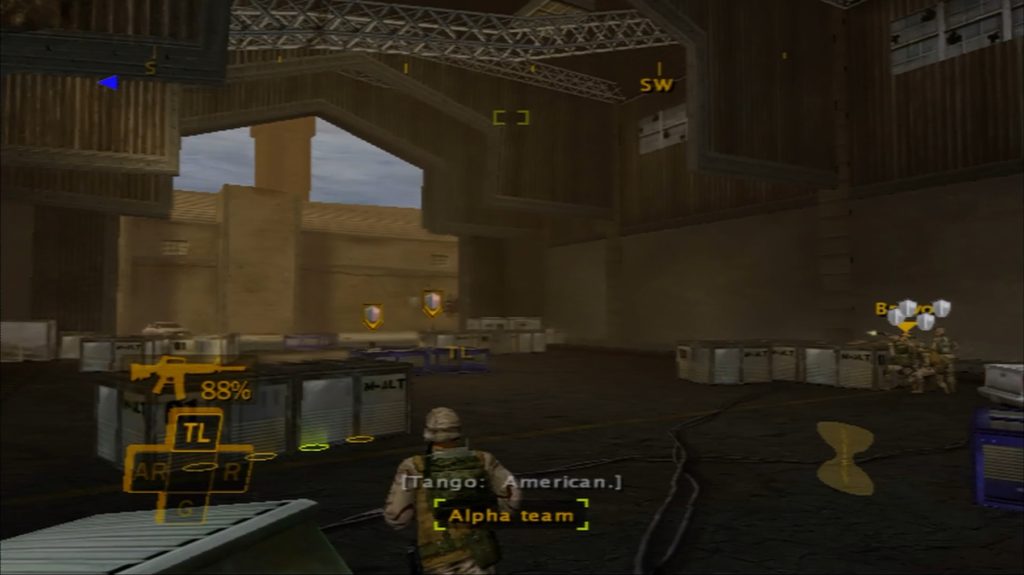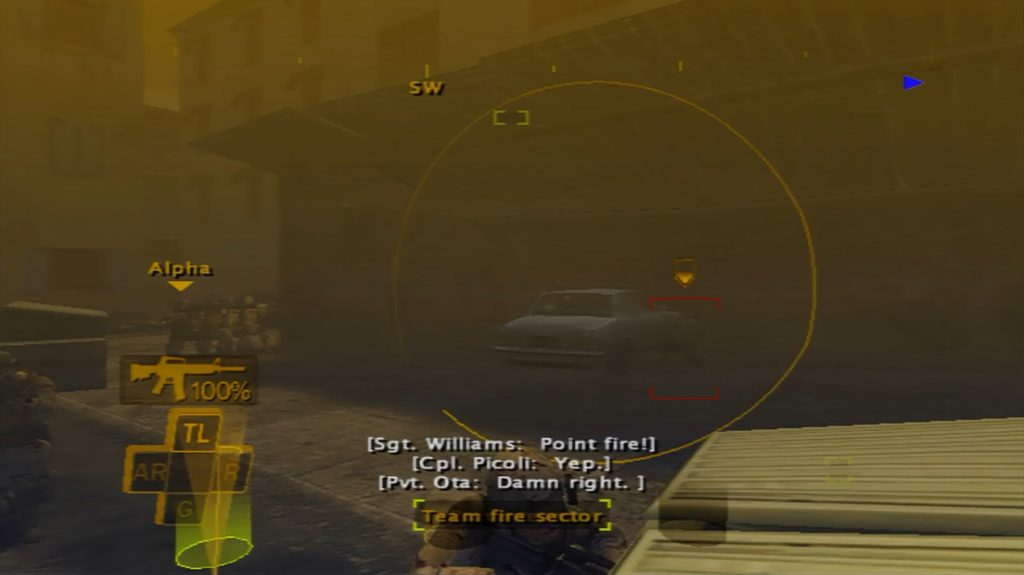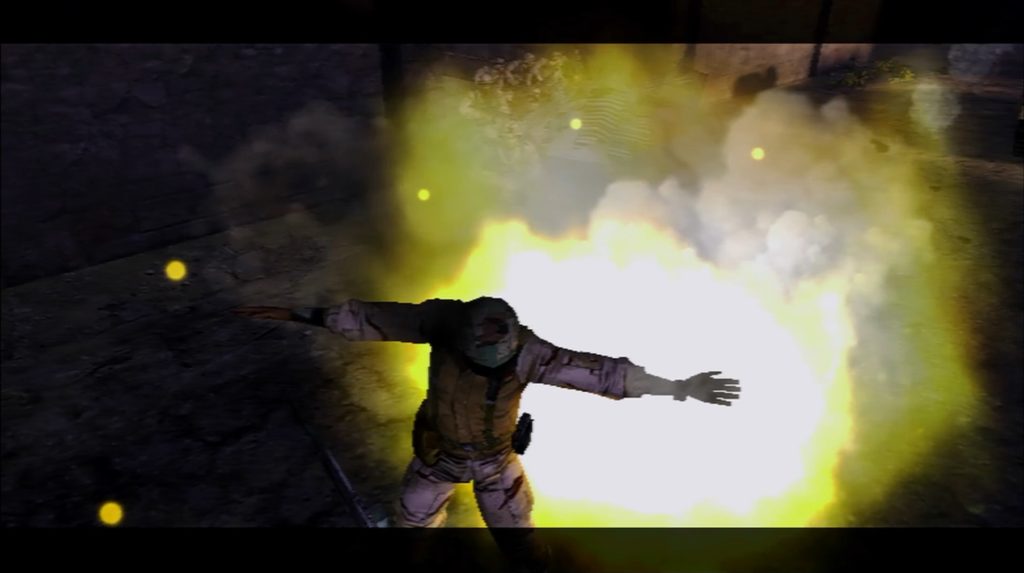In 2021 I did a reading and commentary on this article on Patreon.
I was a bit nervous revisiting Full Spectrum Warrior. Even though I didn’t play much of it as a kid, it was an impactful game for me. It taught me a lot about cover mechanics at a time where I was more familiar with the run and gun nature of arena shooters. To my surprise, it holds up today. Yet I don’t think it’s for the same reason as most other titles.

Released in 2004 on the Xbox, Full Spectrum Warrior is essentially a small-scale RTS not too dissimilar from a squad-based shooter. You control two four-man squads from a third person view. A cursor is used to not only give orders, but also preview what formation the team will be in when they reach their destination. Keeping units in cover is basically the entire point, as two bullets can down a soldier. Unlike a squad-based shooter, controlling the action is entirely hands off. You give an order, the characters ready, then they act.
Despite a focus on forward momentum through levels, most of the mechanics center around defensive maneuvers. Whether it be pushing up to cover, moving cautiously in pairs, laying down suppressing fire to distract foes or simply having a squad watch a sector, it’s all about situational awareness and exploiting the enemy’s flanks. Most of the challenge comes from implementing these simple commands in increasingly complex encounters as well as having each squad support each other.

For being a fairly low-profile strategy game on a console in 2004, it works surprisingly well. While technically considered an RTS, it’s built entirely around playing on a controller. Most actions are as simple as pointing a team in a direction then pressing a button. There are also some branching inputs where you instead hold a button for a different command. It’s intuitive, just not a common control scheme. However with an hour long required tutorial, you’re force fed these instructions whether you like it or not.
That’s not to say everything is great. Frequently when trying to move units a couple feet, the cursor won’t be visible off the bottom of the screen. Also, since the view is locked at an angle above the squad’s heads, it can be difficult to move long distances or around corners. Beyond the soldier’s vision, there’s not much feedback.

While generous with check points, unresponsive soldiers quickly lead to death. Certain actions, such as staying in formation, seem to have a higher priority than, say, dodging a grenade.
Aside from a sequel in 2006, as well as a similar-looking PSP game called SOCOM U.S. Navy SEALs: Tactical Strike, I haven’t been able to find much else that really attempts to create the same experience as Full Spectrum Warrior. It makes me wonder if the reason why it still feels so playable today is due to the lack of a modern equivalent.
When it comes to 3D home consoles, the first decade or so can be difficult to return to. Developers essentially had to re-figure out game design as they transitioned from 2D to 3D, which resulted in a lot of titles with drastically different solutions to the same problems. The most popular mechanics were iterated on and developed into what they are today.
After playing a genre with those accumulated upon improvements, it can be hard to go 10 to 20 years back to a game that structures itself in a completely different way. At the same time, if it’s of the structure that’s been evolving for decades, it can be challenging to return to a genre that has seen massive improvements.

Full Spectrum Warrior falls into a special place. Very little has been done in the realm of the console RTS. Because of that, there’s no real bar to compare it to. No one built off these mechanics, but at the same time there’s no different standard for what it should be. Without that context, it remains as it was – a unique twist on the RTS genre made for a console’s controller.










